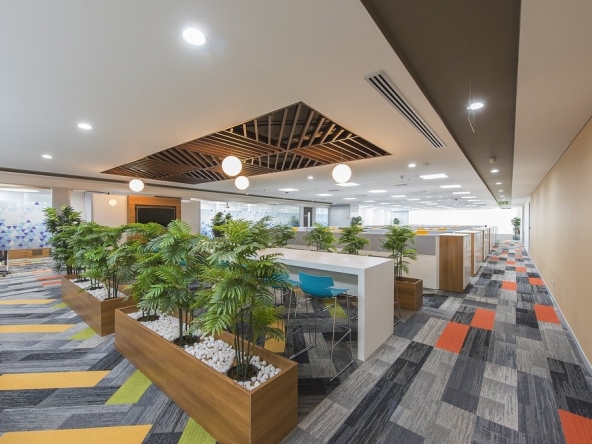The Evolving Future of Work and Flexible Workspaces
Conversations about the future of work are driving companies to rethink business models in a post-COVID world. Businesses must innovate to adapt to shifts in consumer behavior, both short and long-term. Flexible workspaces are emerging as an ideal solution to facilitate this change.
Growth of Flexible Workspaces
Before the pandemic, the flexible workspace sector was rapidly growing, with India becoming the second-largest market in the Asia-Pacific region. The segment saw consistent growth of 25-30% annually, with expansion reaching Tier 2 cities. Despite the disruption, businesses must continue focusing on productivity, while adhering to new norms like social distancing. Flexible workspaces offer businesses the adaptability needed in this evolving environment.
Challenges with Work-from-Home Models
While many companies have embraced remote work to protect employees, challenges are emerging in terms of infrastructure and employee well-being. Poor internet connectivity, lack of services like meals and timely breaks, and the mental health impact of isolation are significant concerns. Flexible workspaces provide the services needed to boost productivity and maintain mental health, offering amenities such as gyms, meals, and collaborative spaces that support employees.
The Long-Term Viability of Remote Working
Although remote work is currently popular, long-term adoption in India faces challenges, including infrastructure issues and utility costs like internet and electricity. Moreover, remote work can lead to mental fatigue, isolation, and increased stress, as seen with the rise of “Zoom fatigue.” Flexible workspaces, however, offer a more balanced solution by combining work and community while addressing these concerns.
Flexibility in Real Estate and Cost Management
Flexible workspaces allow businesses to shift real estate costs from fixed to variable expenses, providing financial flexibility. These spaces also offer scalability, enabling businesses to adapt to fluctuations in demand. As social distancing becomes standard, companies can mitigate health risks by operating from multiple locations.
Employee Preferences and Proximity to Home
The desire to work closer to home is growing, as employees seek a better work-life balance and proximity to family, especially in uncertain times. Flexible workspaces allow companies to set up smaller offices across different locations, reducing long commutes and improving employee satisfaction.
Community Building in Flexible Workspaces
One of the key advantages of flexible workspaces is the strong sense of community they foster. Community managers play a crucial role in delivering great experiences, ensuring seamless communication, and providing reliable information, especially during a health crisis. This sense of belonging and support helps employees thrive both mentally and professionally.
Conclusion: A New Way of Working
As businesses adapt to changing needs, flexible workspaces are well-positioned to support the future of work. By offering agile real estate, fostering community, and prioritizing employee well-being, they provide a sustainable solution for businesses navigating the post-pandemic landscape. The practices and policies put in place today will pave the way for a new and dynamic workspace model moving forward.




